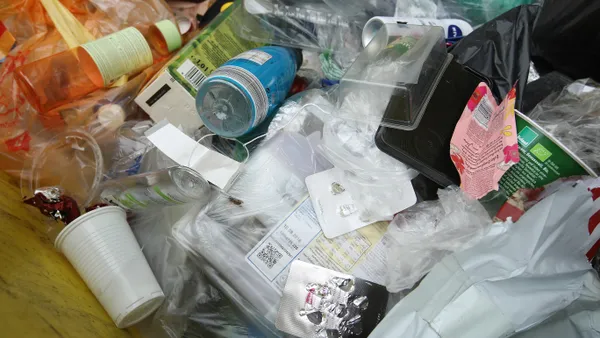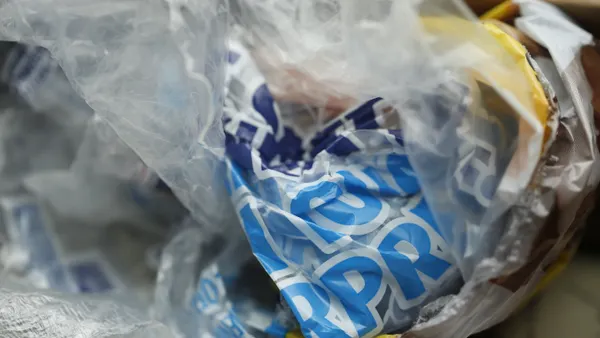Dive Brief:
- It is estimated that 560,000 tons of gum is chewed around the world each year, creating pollution on public streets and extra waste in landfills. That's why British product designer Anna Bullus created Gumdrops, small public recycling bins for chewing gum waste.
- The tiny pink globes, popping up around cities like London, recycle the gum waste to make new Gumdrop receptacles. The chewing gum waste — which contains synthetic rubber ingredients — can also be used to make items like phone cases and rubber boots.
- In a product trial at Southampton Airport, two gumdrops were placed in a men's restroom for a year and changed five times. While the cost of changing the gumdrops cost $340 for the year, it saved an estimated $4,620 in cleaning costs for the airport.
Dive Insight:
While chewing gum waste seems minor in the grand scheme of the waste industry, the thousands of tons of waste is not biodegradable, which adds up to a large amount of unwanted polymer in landfills. Even worse, most chewing gum ends up on the street — creating a sticky mess for citizens.
"So why do we do it? Why do we litter our streets? Destroy our surroundings with a dirty eye sore? Allow others to stand or sit in our poorly disposed chewing gum? Unfortunately we cannot answer questions on the wonders of mankind, but what we can do is offer a solution to this sticky situation," Gumdrop says on its website.
Gumdrop also prides itself on practicing a closed loop process by using Gum-tec to manufacture the receptacles, which are then used and re-made into more receptacles or other products.
While the receptacles are not yet popular in the United States, it is important that they be integrated into the US market, as 59% of Americans chew gum.










